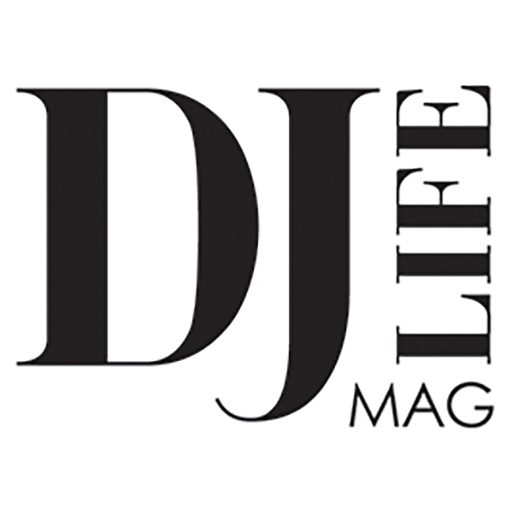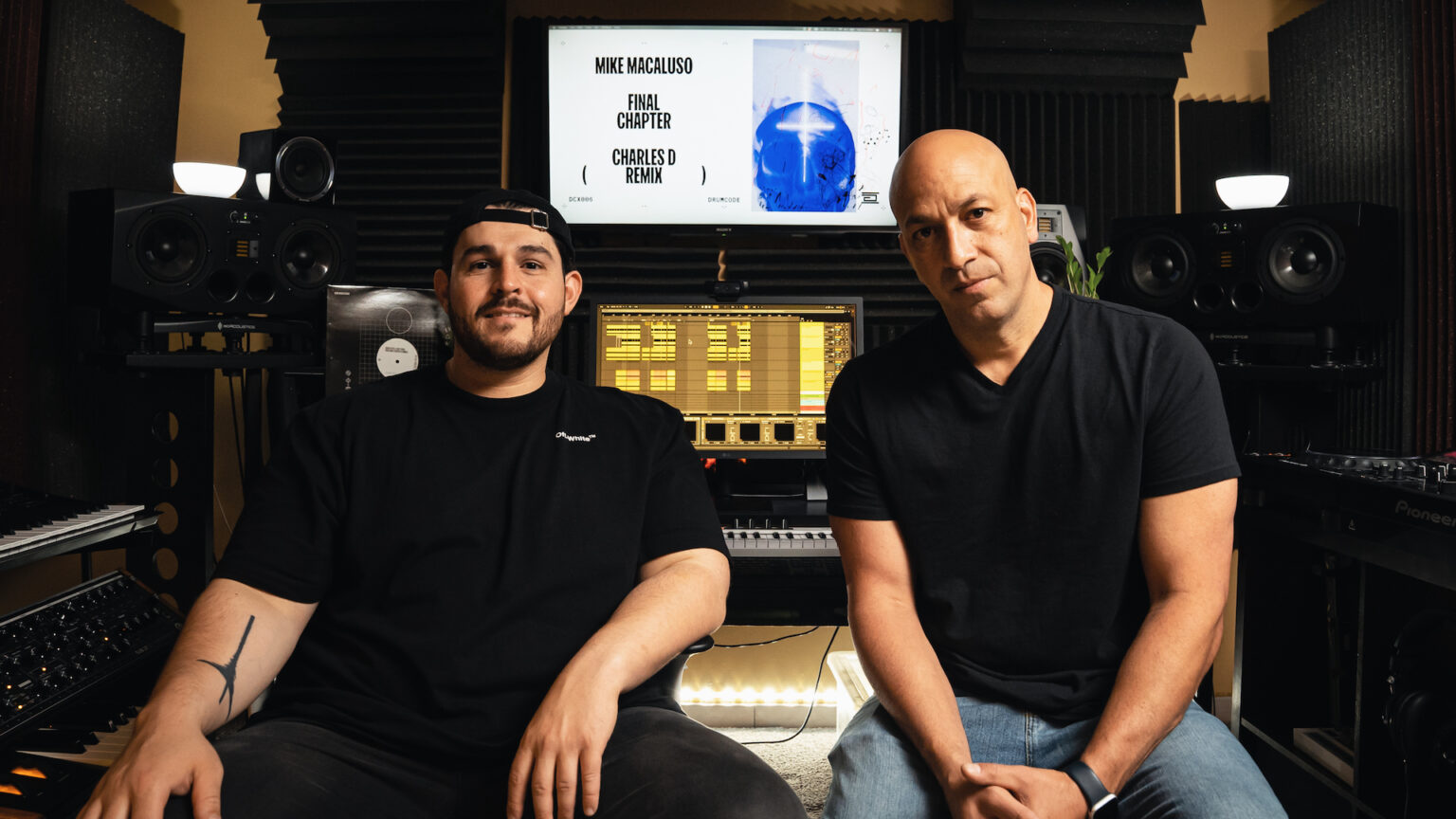Off the back of the remix, the two New York area DJ/producers met in person for the first time to discuss the making of the legendary track.
Not every producer gets to remix a classic track that helped shape his sound. But this very thing happened for rising DJ/producer Charles D, who recently added a modern techno touch to Mike Macaluso’s 1999 underground smash, “Final Chapter,” and released it on the prestigious Drumcode label.
Considered to be one of the greatest New York City club anthems of all time, “The Final Chapter” helped define an era in Gotham clubland when the progressive sound ruled the dancefloors of its many cavernous venues, like Exit, Tunnel, and Limelight. And now Charles D (aka Calogero LoBrutto) is bringing his take to the techno crowd.
Off the back of the remix, the two New York area DJ/producers met in person for the first time to discuss the making of the legendary track, the legacy that surrounds it, and the club culture that created it.
Charles D: Hey Mike, it’s a pleasure to meet you finally in person. For me, it’s always a surreal moment when I get to meet an artist that has personally had an impact on my life as an artist. Your record “Final Chapter” was a big part of the soundtrack of NYC nightlife in the late 1990s and early-to-mid 2000s. At that time, iconic nightclubs such as Sound Factory, Avalon, Tunnel, and Pacha were thriving in the local scene, and “Final Chapter” was being played every weekend for years – even until I started going out to nightclubs myself in 2005. Take me back to the beginning… at what point of your career did “Final Chapter” come along?
Mike Macaluso: Thank you Charles for your kind words, I appreciate it. You are super-talented and I look forward to hearing more of your music in the future. I made the “Final Chapter” in 1998-99, if my memory serves me right. I had just released a few records under the name Revelation on Groovilicious Records, which was distributed by Strictly Rhythm Records. I released a track on Groovilicious called “The Real Thing,” which was getting a lot of attention from all the local DJs. The progressive era was underway in New York City and hard, progressive trance and house was getting very popular during that time. It was shortly after that when I made “Final Chapter.”
Charles D: So, did you go into the studio specifically to create a big club track? Or did it happen spontaneously?
Macaluso: I was going out to see some friends, Eddie Baez and Denny Tsettos, who were DJs playing at Club Exit, which was a mega-club on 56th Street in Manhattan at the time. Now it’s Terminal 5, a big rock venue. I remember hanging out in the DJ booth, which was on the second floor. They were playing some very hard progressive tracks that night. I remember walking out of the booth and looking over the railing at a sea of people going nuts to the music. The energy was incredible. Although my passion and love was for techno at the time, I decided I wanted to make a record that hit hard like these tracks. It was that night when I got home from Exit at about 4 a.m. that I made “Final Chapter.”
Charles D: Oh, wow! How long did the track take to come together in the studio?
Macaluso: I made “Final Chapter” fairly quickly. I laid the key lines down in about an hour or so. Then the arrangement took a day or so, tweaking it here and there. Maybe it was all said and done in about three days. Then I took another day mixing it.
Charles D: It came together pretty quick, then. Can you tell me about your set up then?
Macaluso: My old set-up, the one I made “Final Chapter” on, was super simple. At the time, money was tight and gear was expensive. I was running the original version of Cubase on a Power Mac 9600, I believe. I had a Novation SuperNova, an Access Virus, a Korg X3 and Trinity keyboards, a Novation Drum Station, and a few other pieces of gear. My console was a Mackie 16.8 mixer and then later I went to the Mackie D8Bconsole. I sampled a lot of vinyl back then to get sounds. There were no online sample packs. There were sample CDs you could buy – but most were not good.
Charles D: How has it changed over the years?
Macaluso: My current set-up is mainly in the box. I use iMac running Logic. I do have some of my old gear still, but I’ve since sold most of it. I feel like you don’t need it anymore. The plug-ins and soft synths nowadays are pretty solid – and if they aren’t, you can make them sound good. There is no substitution for analog gear, especially when it comes to bass, but I feel like you can get things to sound pretty good with working all in the box. I do have an AMS NEVE 8816 analog summing box, which I do my summing in. My audio IO is an Apogee Ensemble. My monitors are Focal Shapes, Auratones, Yamaha NS-10s and Mackie 824s. I mainly use the Focals now when mixing.
Charles D: How about your workflow?
Macaluso: In terms of my workflow, I usually start with a groove, then loop it for four bars. I, then, start playing around with key lines, melodies. Once I get a few melodies I like, I will add a bassline and then tweak the groove to make sure it is in key, etc. Then, I will try and come up with a few other complimenting melodies to the main one. Once I have those in place, it is all about arrangement and adding ear candy.
Charles D: Nice one. “Final Chapter” has these memorable bells that you created multiple melodies with. What piece of gear was that made on? Was the use of this bell sound an idea you had prior to starting the creation of this record?
Macaluso: [Laughs] Everyone asks me where those bells came from! This will remain a secret, but the melodies were all made with the Virus and Novation SuperNova. All samples came out of an Akai S3000XL. I think that record was mainly inspired from my old techno days. I grew up going to Limelight, Roxy, Palladium, etc. I used to go to Limelight as a kid. All of the rave techno was being played, stuff like T99 and O Fortuna. The track “Apotheosis” always stuck with me and I think subconsciously some of the melodies were inspired maybe from that era. I always like to tell a story when I make records. I think it is important, even if it is a groove. Music should take you somewhere and tell a story. “Final Chapter,” in my opinion, tells a story. It has complementing melodies that bring you to a climax. I did not plan on using the bells – I was just going through sounds and came across them. As soon as I heard those bells with the main melody, I knew it would be a very memorable sound.
Charles D: It certainly was! Do you remember the first time you tested it out and how it went down?
Macaluso: At the time, I had just met some great guys who were already making New York progressive music. I did not have much of a studio or room at the time, so I took the track to a good friend and pioneer in the industry, Anthony Acid, to have the record mixed. It is hard to remember, but I believe Richie Santana tested it out for me in a local club in New Jersey. The crowd went nuts the first time it was played. It was at that point I knew this could be a big record.
Charles D: Do you remember the first big DJ to support the record?
Macaluso: The first big DJ and great friend to play it was Johnny Vicious. I met Johnny at Club Ohm in the city. He was a DJ there and I would drop off new CDs of songs that I made to him. He was blowing up at the time and had released some monster records in the New York progressive scene. He started playing my stuff before the “Final Chapter.” He also had a residency at 103.5KTU and did a mix show called the “Sanctuary” on Saturday nights that everyone listened to. There were no podcasts [laughs]. He really pushed and broke the record in New York. Denny Tsettos was also responsible for making it big especially in New Jersey, where he was the resident DJ at Temptations, a nightclub on the Jersey Shore. Once it broke, most of all the local DJs were playing it. I am grateful to all the DJs big and small for making that record what it is. Even ’til this day, it is still played.
Charles D: How do you remember the New York club scene from that time? How has it changed?
Macaluso: The New York club scene back then was incredible – there are no words. If you didn’t experience it, then you missed out. There was a vibe in the room that was felt in your soul. People danced without looking at their phones. There was an energy that I barely see anymore. I used to go to Club Vinyl on Fridays to hear Danny Tenaglia religiously, just to get inspired as a DJ and producer, and before that I would listen to Danny at the Tunnel for his DTOUR party. I would also go to Twilo all the time to hear guys like Carl Cox, Sasha and Digweed, etc. On Saturdays, I’d go to hear Junior Vasquez. The Roxy and Tunnel were also mega-clubs that I loved so much and was so inspired by. These clubs had something about them that left a mark on you when you left. Now I just feel like there is not the vibe that there used to be. Everything has changed.
Charles D: Are you still producing music now?
Macaluso: Yes! I started making music again this year and I am looking to release a lot of new music soon.
Charles D: Thanks for taking a look back in time…
Macaluso: My pleasure.


